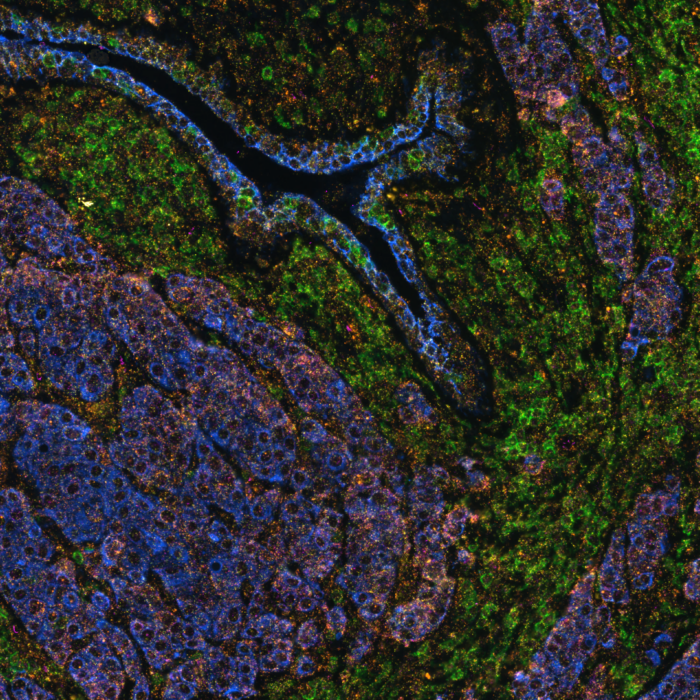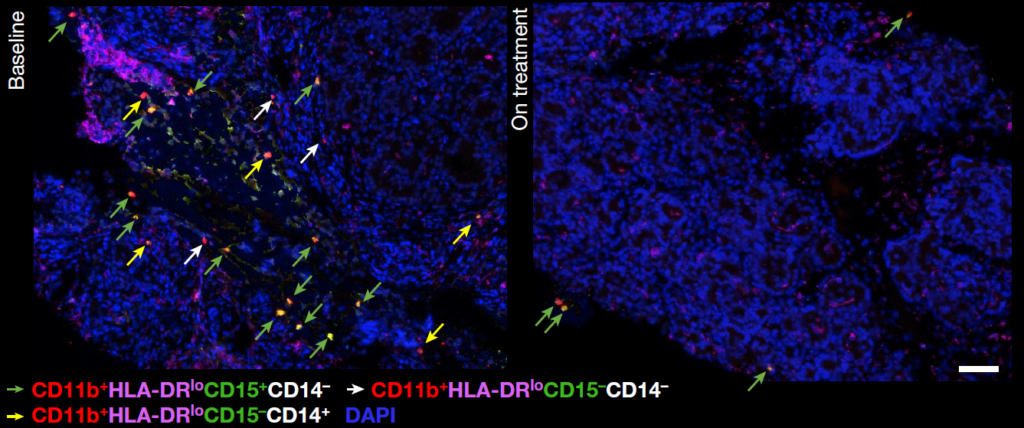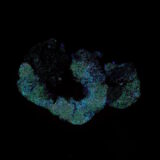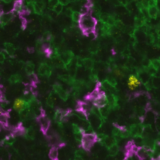Poster
The future of biomarkers: going “spatial”
Posted on:

Organs are intricate ecosystems composed of hundreds of billions of diverse cells, each playing a crucial role in development, physiology, and disease progression. Understanding how these cells interact and organize within tissues is fundamental to decoding the complexities of biological systems. Spatial multiomics emerges as a revolutionary tool in biological research, allowing for the visualization and analysis of these intricate cellular relationships. This transformative approach not only provides a comprehensive view of living systems but also offers invaluable insights into disease mechanisms, biomarker discovery, and therapeutic innovation.
Spatial multiomics: visualizing molecular landscapes
Spatial multiomics represents a cutting-edge paradigm in biological research, seamlessly integrating multiple omics techniques. This innovative methodology combines data from various molecular layers and empowers researchers to analyze the molecular composition of biological samples while preserving their spatial context within tissues. While well-established proteomics and transcriptomics play pivotal roles in spatial multiomics, the continuous emergence of novel technologies such as epigenomics, metabolomics, and lipidomics underscores ongoing advancements in the field.
The significance of spatial biomarkers in biomedical research
Spatial biomarkers are biomarkers that exhibit specific spatial patterns within biological samples. Unlike traditional biomarkers, which are often measured in bulk samples or using tissue dissociated samples, spatial biomarkers provide information about the localization or spatial organization of molecules within their native context. These biomarkers and their spatial distribution may correlate with various physiological or pathological conditions and be associated with the patient’s potential for therapy response.
Spatial multiomics plays a pivotal role in biomarker discovery, offering several key advantages:
- Providing comprehensive insights: analyzing biomolecules from multiple biological responses and combining them in a single readout provides a deeper and more thorough understanding of tissue biology and disease.
- Revealing spatial heterogeneity: many diseases exhibit spatial heterogeneity within tissues, meaning that different regions of the same tissue may have distinct molecular profiles. Spatial multiomics techniques can capture this heterogeneity, allowing for the identification of spatially resolved biomarkers that reflect specific disease subtypes.
- Facilitating study of cellular communication: spatial multiomics enables the integrative study of cell-cell proximity, cell activity state, and signaling activity, providing insights into the underlying tissue state and response to environmental or cellular factors. Understanding and monitoring how each part evolves along the patient’s therapeutic journey can provide spatial biomarkers to predict or improve patient outcome.
- Contributing to personalized medicine development: spatial multiomics can contribute to personalized medicine by identifying spatially resolved biomarkers capable of predicting individual patient outcomes or treatment responses. This information can guide personalized treatment strategies customized to the specific spatial and molecular characteristics of each patient’s disease.
Guo et al. shed light on the potential of spatial multiomics technologies to dissect disease mechanisms within clinical research settings1. The authors investigated whether combining hormone therapy with CXCR2 inhibition could release therapy resistance and increase the clinical benefit of castration-resistant prostate cancer (CRPC) patients, as seen in their preclinical experiments.

Through spatial proteomics on COMET™, the authors confirmed their bulk analysis results and the selective expression of CXCR2 by myeloid-derived suppressor cells (PMN-MDSC) in human CRPC tissue (Figure 1). Using a robust protein panel developed on COMET™, the authors analyzed patient–matched longitudinal samples from their phase I clinical trial on CXCR2 inhibitor (CXCR2i). Their findings confirmed the drug efficacy and specificity, as well as the improved clinical response for CXCR2i treated patients (Figure 2).

This example highlights the significant impact of spatial assays in deciphering disease complexities and propelling the field of personalized medicine forward. As spatial multiomics evolves, the future of biomarker discovery takes on a spatial dimension. Utilizing spatial multiomics technologies, researchers delve deeper into the spatial intricacies of biological systems, enabling enhanced disease diagnosis, prognosis, and treatment. By identifying spatially resolved biomarkers and comprehending their intricate tissue relationships, spatial multiomics demonstrates immense potential for driving advancements in precision medicine.
References:
- Guo C. et al. Targeting myeloid chemotaxis to reverse prostate cancer therapy resistance. Nature. 2023. doi: 10.1038/s41586-023-06696-z.

